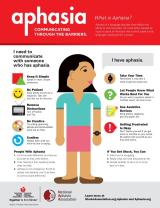How to do a DEA number verification?
The Drug Enforcement Administration (DEA) number is a unique identifier assigned to healthcare providers by the DEA to authorize them to prescribe controlled substances. Verifying a DEA number is crucial to ensure the legitimacy and authorization of a healthcare provider. Here's a guide on how to perform DEA number verification accurately:
Use the DEA Number Validation Algorithm:
- The DEA number follows a specific algorithm for validation. It consists of two letters, six numbers, and one check digit. The second letter represents the registrant's last name, and the first letter is a code that indicates the type of registrant (e.g., physician, dentist, veterinarian).
Understand DEA Number Components:
- Break down the DEA number into its components:
- The first letter is the code for the registrant type.
- The second letter represents the initial of the registrant's last name.
- The next six digits are a unique identifier assigned by the DEA.
- The last digit is a check digit, calculated using a specific formula.
- Break down the DEA number into its components:
Verify the First Letter (Registrant Type):
- Each registrant type has a specific code as the first letter. For example, "A" is for practitioners (physicians, dentists), "M" is for mid-level practitioners, and "G" is for distributors.
Check the Second Letter (Registrant's Last Name):
- Ensure that the second letter corresponds to the initial of the registrant's last name.
Verify the Check Digit:
- The check digit is calculated using a specific formula involving the first, third, and fifth digits. You can use online tools or DEA number verification software that implements this algorithm to automatically check the validity of the DEA number.
Use DEA's Registration Validation Website:
- The DEA provides an online registration validation service on their website. You can enter the DEA number, and the system will confirm whether it is valid or not. Visit the DEA Diversion Control Division's website for access to this service.
Contact the DEA:
- If you have concerns about the validity of a DEA number, you can contact the DEA directly. They may provide assistance in verifying the legitimacy of a healthcare provider's registration.
Stay Informed about DEA Number Formats:
- Familiarize yourself with the standard format of DEA numbers. This includes the position of letters and numbers and the overall structure. Any deviation from this format could be a red flag.
Use Third-Party Verification Services:
- There are third-party services and software designed for healthcare professionals and institutions that offer DEA number verification. These services often use the DEA's validation algorithm to ensure accuracy.
Always ensure that you have proper authorization and compliance with privacy and legal regulations when verifying DEA numbers. Unauthorized use or disclosure of this information can have serious consequences. If in doubt, contact the DEA directly for assistance.
DEA number verification: A step-by-step guide for healthcare professionals
DEA number verification is an essential step for healthcare professionals to ensure compliance with federal regulations and prevent the diversion of controlled substances. Here's a step-by-step guide to verifying DEA numbers:
Step 1: Obtain the DEA number
The DEA number is a unique identifier assigned to healthcare professionals authorized to prescribe controlled substances. You can typically find the DEA number on the practitioner's license, prescription pad, or business card.
Step 2: Access the DEA online database
The Drug Enforcement Administration (DEA) maintains an online database of registered practitioners. To access the database, visit the DEA's website and navigate to the "Registration" section.
Step 3: Enter the DEA number
Locate the "Practitioner Information Lookup" tool and enter the DEA number you want to verify. The system will search the database and display the practitioner's name, address, and registration status.
Step 4: Verify the registration status
Ensure that the registration status is "Active" or "Valid." This indicates that the practitioner is currently authorized to prescribe controlled substances.
Step 5: Document the verification process
Maintain a record of the DEA number verification process, including the DEA number, practitioner's name, registration status, and date of verification. This documentation can serve as proof of compliance if necessary.
Online tools: Utilizing technology for quick and accurate DEA number verification
In addition to the DEA's online database, several third-party platforms offer DEA number verification services. These platforms often provide additional features, such as:
- Real-time verification: Verify DEA numbers in real time, ensuring that the information is up-to-date.
- Batch verification: Verify multiple DEA numbers simultaneously, saving time and effort.
- Integration with prescription software: Integrate DEA verification into prescription software, streamlining the verification process.
Compliance and security: Ensuring the legitimacy of DEA numbers in verification
When verifying DEA numbers, it's crucial to take steps to ensure the legitimacy of the information obtained. Here are some measures to consider:
- Use reliable sources: Only verify DEA numbers using trusted sources, such as the DEA's online database or reputable third-party platforms.
- Be vigilant against fraud: Be cautious of individuals or entities that attempt to provide false or misleading DEA information.
- Protect sensitive information: Safeguard DEA verification records and practitioner information to prevent unauthorized access or disclosure.
Legal considerations: Consequences of failing to verify DEA numbers
Failing to verify DEA numbers can have serious legal consequences, including:
- Civil penalties: Healthcare professionals may face civil fines for failing to verify DEA numbers.
- Criminal charges: In severe cases, healthcare professionals may face criminal charges, such as drug diversion or conspiracy.
- License suspension or revocation: Failure to verify DEA numbers can lead to suspension or revocation of a healthcare professional's license.
Best practices: Establishing protocols for effective DEA number verification
Healthcare organizations should establish clear protocols for DEA number verification to ensure consistent and effective compliance. These protocols should include:
- Designated personnel: Assign specific individuals or teams responsible for conducting DEA number verification.
- Verification frequency: Establish a regular cadence for verifying DEA numbers, such as annually or upon onboarding new practitioners.
- Documentation procedures: Implement procedures for documenting DEA verification activities and maintaining accurate records.
- Training and education: Provide training and education to healthcare professionals on DEA verification procedures and the importance of compliance.













